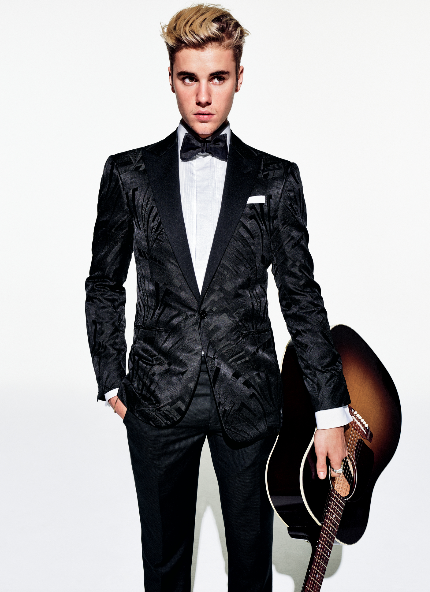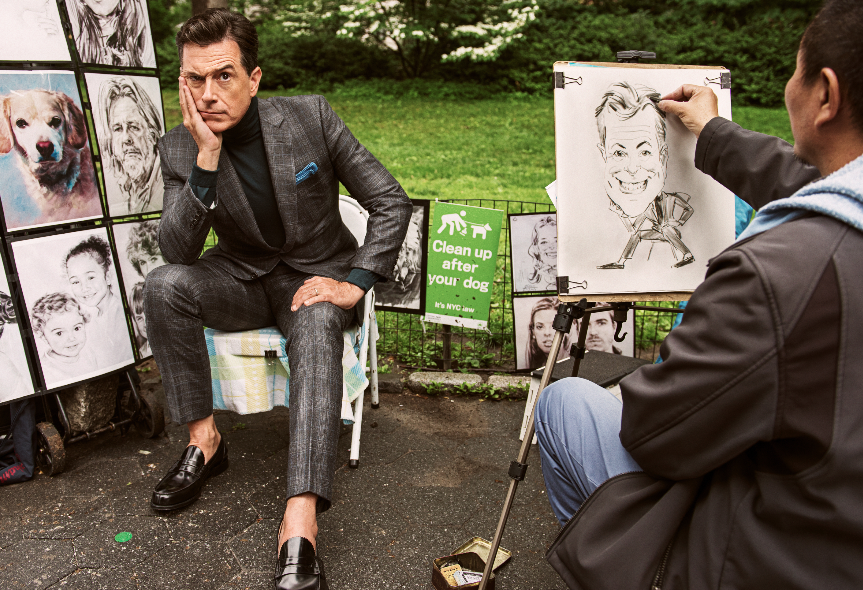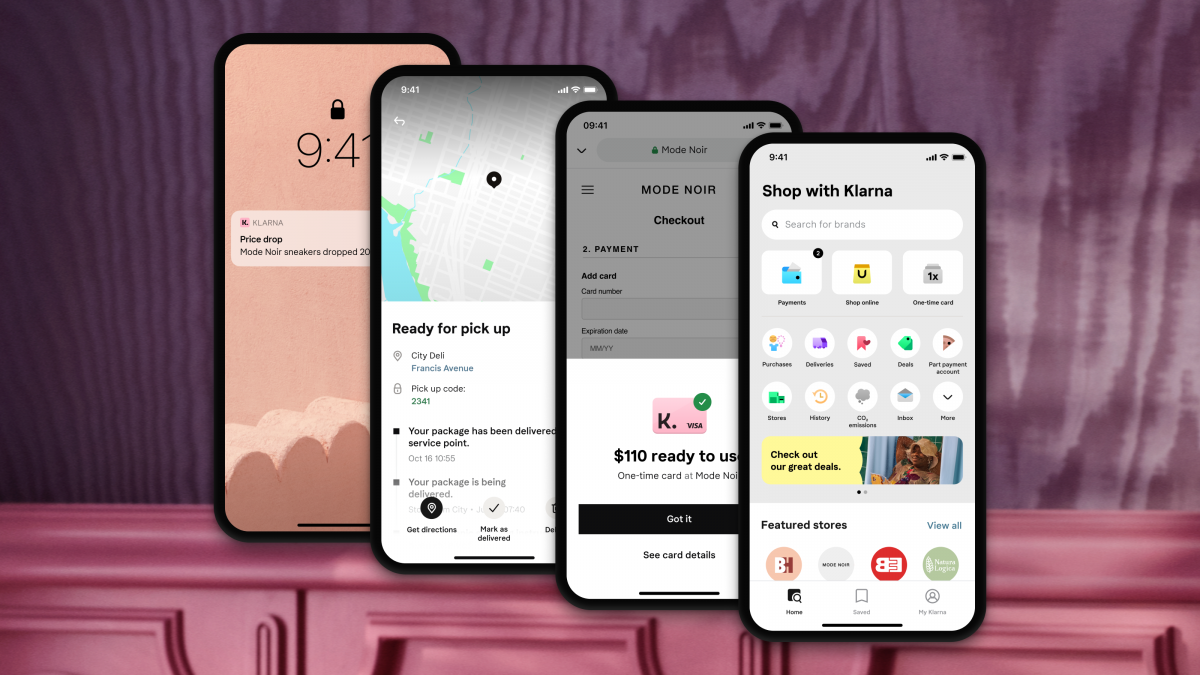Jim Moore has certainly had a storied career. His name is synonymous with men’s fashion, and for good reason. Serving as the Creative Director of menswear bible GQ, Moore has defined how men dress for the past 40 years and in many ways influenced how we perceive masculinity through the lens of pop culture.
Entering a new role that has given him the freedom to pursue new business opportunities (while still having a voice at the publication,) Moore is embarking on a string of new adventures that have him excited.
While in Toronto to promote his new book Hunks & Heroes: Four Decades of Fashion at GQ, Moore discussed entrepreneurship, Brad Pitt, and what it takes to be a great leader today. It turns out, the lessons you can learn from fashion and business aren’t so different from each other.


You’ve shaped and defined one of the most iconic brands in popular culture. Whether it’s a media company or a direct-to-consumer product, what does a great brand look like to you?
You have to have a strong point of view and be dedicated to it. I can only speak to the creative side of things because that’s how I grew up but what I’ve found is that you have to be willing to be a little provocative. For example, I’m working with this company in Chicago that makes tailored clothing, shirts, and ties, and they’re seeing their business drop off. Well, if it’s the death of the tie (and you make ties), why don’t you get in front of it and say, “Have you heard it’s the death of the tie?” And then do something about it. Not only are you going to make categories of shirting that will look great without a tie, but you’re going to make new ties that are going to excite a new generation. You’re not going to just stop making them or buckle under the pressure and hide. You’re going to find a way to keep it vibrant and robust.
What do you find is the biggest difference between business and creative types?
Being a creative person is tough. I recently had a conversation with a VC who was trying to explain why people who are financially-minded always make it, and why creative people can also make it but never strike the goals that business people can. I was having this big argument with him but also tried to understand what he was saying. Creative people have too many ideas in their brains, they’re overstimulated and always in overdrive. I think the difference between a successful and unsuccessful creative person is that a successful one knows how to grab the first idea in their head and commit to it. When you meet someone who is highly creative but not successful, it’s because they just let those ideas swirl around in their head.


I grew up in a culture where every three-and-a-half weeks I’d get a magazine out the door. I would find out on a Tuesday that on Friday, I’m shooting Brad Pitt. I’d have no clothes, no idea, and no location. But when I was given [the assignment], an idea would come to me and I would just go with it. It didn’t matter if the idea was good, bad, or if I was going to regret it later. It’s an idea that I had and I was going to stick with it. Maybe along the way, we couldn’t afford to shoot it in India and have to do it in LA, or maybe we wouldn’t have as many props as I envisioned, but somehow that idea stayed there. I didn’t work for a commercial agency where I had six months to produce a TV commercial. I had three days to put it all together, and that was done by committing to an idea and then bringing in an army to help me.
…the difference between a successful and unsuccessful creative person is that a successful one knows how to grab the first idea in their head and commit to it.


I’m used to it, I grew up in that culture. My shuttle is New York to LA. Most people in America think of that as a transcontinental journey, but I do it about four times a month. A lot of people didn’t last in either my department or magazines because they thought we were animals—that it was a circus. You have to love the circus. A circus is a circus, and you have to embrace it, make it better, and more exciting.
How do you think your role as a creative director has evolved?
It’s interesting because I was having this conversation with Anna Wintour, who has been such a big supporter of mine and lovely. You hear these stories all the time, like how Emily [Weiss] was a fashion editor who turned into an entrepreneur that turned [Glossier] into a billion-dollar business. Vera Wang was a fashion editor at Vogue and she built a bridal business. We all have ideas but it’s about whether or not you actually make the jump.
When Condé Nast restructured and got rid of everybody at the top, I knew that I would be fine because I’m always up for a new chapter. Every month [of my career] was a new chapter for me. I got excited and did the opposite of what you’re supposed to do and said yes to everything. I had breakfast, lunch, and coffee with 200 people in the fashion business because I wanted to challenge myself. I stepped outside of a business where I was always wearing 20 hats and entered a world where people are wearing one or two hats.
How did understanding your subjects help you create a better end result?
If you look at the images that I did over the years, I always wanted people to pick up the magazine at that particular point in time and say, “Tom Cruise has never looked better than in 1983, or in 1992, or in 2004.” It’s a style magazine and I had to make guys look great, but style goes beyond putting them in a great suit. I had to make them look their best while being sensitive when we were shooting.
Actors are really insecure about being in front of a camera. They don’t want to play themselves in front of a still camera and the only reason that they are good at what they do is because they’re not having to play themselves. They’re strongly directed and have a script. I had to create narratives for certain actors. The last time I shot Ryan Gosling for a cover, he was in a really funky mood. He tends to overthink things a little bit, but he’s the greatest guy. I asked him if everything was okay and he was like, “Yeah, I’m just, I’m trying to stay in character. I’m doing night shoots for this movie called Drive,” which didn’t mean anything to me at the time. Then I saw Drive and it made total sense. When you shoot athletes, you’re dealing with a whole different group of people because they are all about themselves. They love style and are not afraid of a mirror. An actor is different. You have to be a little bit more clever with them.


What did you learn about teamwork from working with some of the greatest talent in the industry?
Luckily, I got to work for 15 years with [Editor-in-Chief] Jim Nelson, who is an incredibly instinctive person. The editor before Jim was an incredible guy, Art Cooper, who took the magazine from zero to 60. But then he became a little old fashioned because he was concerned about budgets and we were no longer able to dream as big as we could. Jim came in and wanted to talk to the reader more. It was about the reader, not the designer or advertiser. He wanted to build a magazine that he wanted to read. He knew nothing about fashion. The first thing he did was go into the fashion closet and asked us, “What the hell do you guys do back here? I don’t know anything.” He was the worst dresser on staff, but he had a keen need to build a great team.
The best Editors-in-Chief are the people who hire the best people for all the things that they don’t know. You need a team that really specializes in different things and be able to recognize the best versus trying to be the best. Ultimately that will be your win because the team will win, your [business] will win, and you will win.
Jim had the final word on things, but if I told him that a certain colour was in, or we should watch this designer, or we should do a 10-page story on this person, he would trust me. I think that was a really important part of our relationship. That’s what kept the legacy going and what kept me excited, fresh, and on my toes.
What is your personal definition of success?
It’s about realizing your potential and going for it. A lot of young people today want to do everything but you can’t, you can only be one thing. You can have two careers in you but you have to pick one and go with it. It doesn’t matter what everybody else says, if you feel an instinct that’s pulling you in a certain direction, then that’s the right instinct. I’m working on a TV show and I’m just trying to keep the same tunnel vision that I have when I put the magazine together, and that’s to not listen to outside forces. You have the control to make decisions, so make sure it’s something that you will be proud of.














